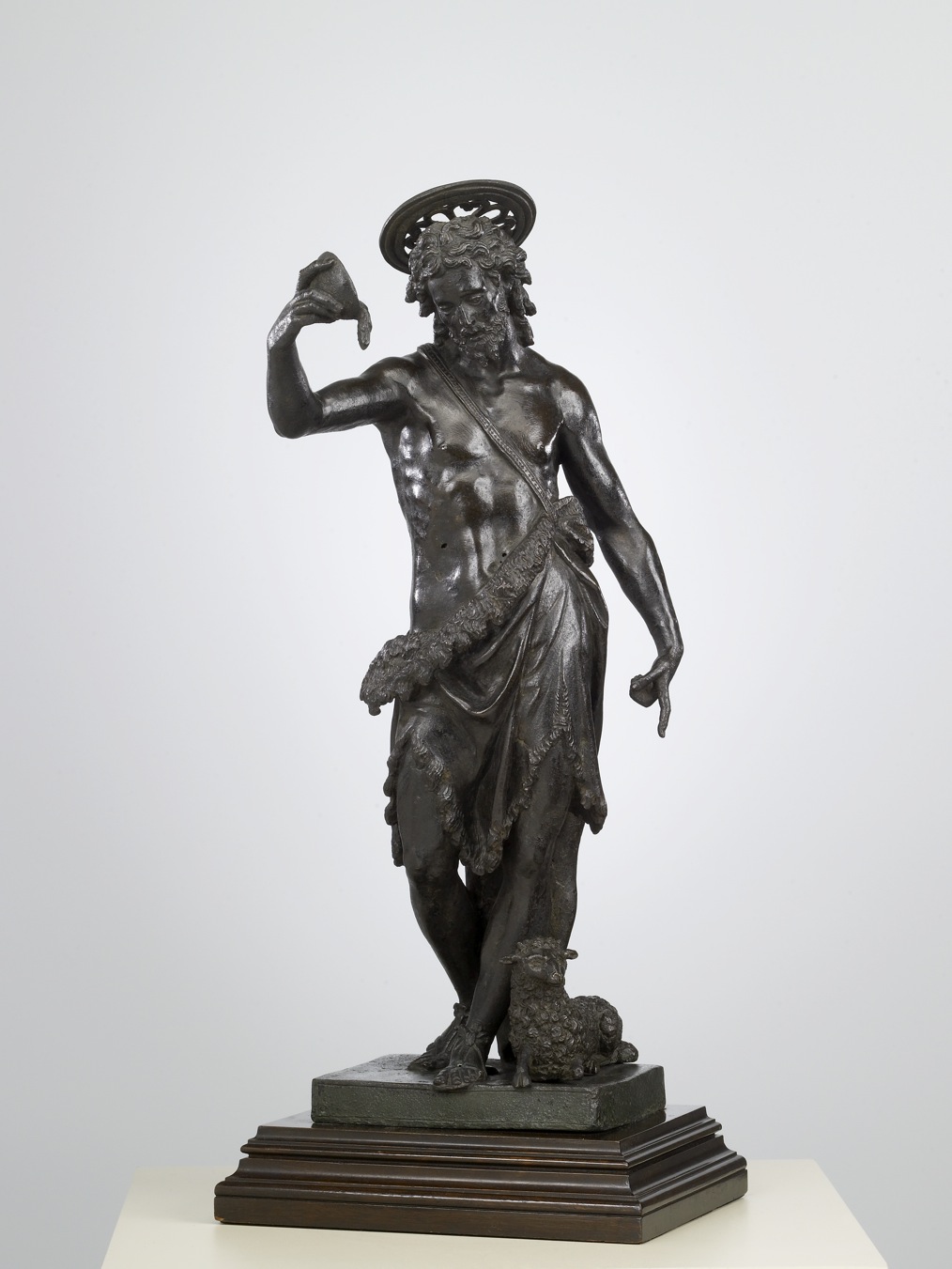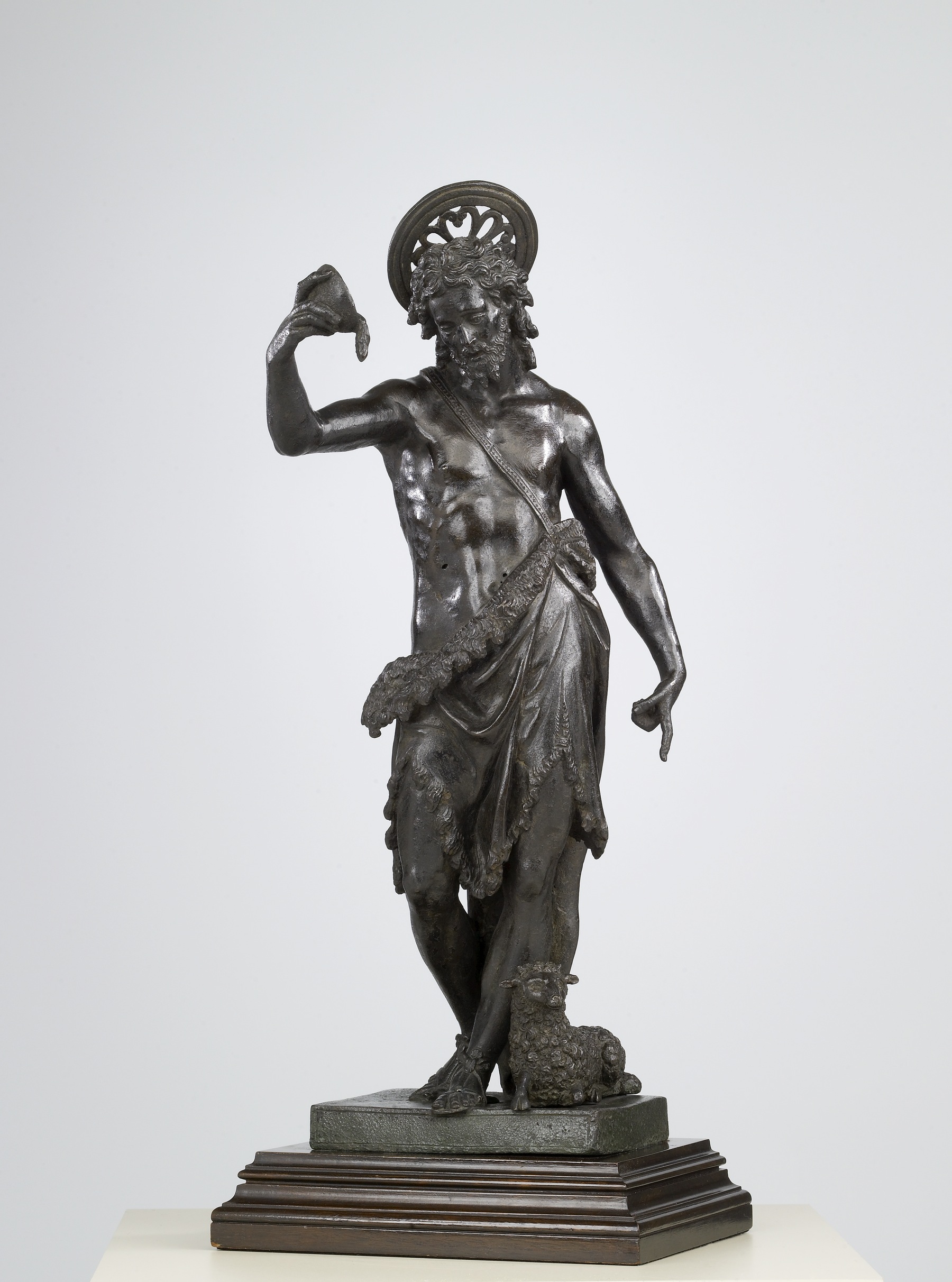Saint John the Baptist
(Renaissance Europe )
This elegantly elongated statue of St. John the Baptist shown in the act of baptizing was once placed in a holy-water stoup (basin), as can be seen from the greenish patina on the base caused by contact with water. The location was most likely a church in Venice or Genoa, where the sculptor worked. St. John foretold the coming of Christ and baptized him. The lamb is a symbol of Christ (who offered himself as a sacrifice in place of the traditional lamb).
The little cross-like punch marks on the strap that holds the fur are typical of the decoration on objects from the Roccatagliata workshop. The dark surface patina is characteristic of Venetian bronzes.
Inscription
Provenance
Provenance (from the French provenir, 'to come from/forth') is the chronology of the ownership, custody, or location of a historical object. Learn more about provenance at the Walters.
Collection of the Empress Frederick, Chateau de Friedrichsdorf [date and mode of acquisition unknown]; Princess of Hesse, 1901 (?), by inheritance; Albert Werner, Vienna, [date and mode of acquisition unknown]; Jacques Seligmann and Company, Paris and New York, March 14, 1924, by purchase [inventory numbers 3355/10830]; Henry Walters, Baltimore, 1926, by purchase; Walters Art Museum, 1931, by bequest.
Geographies
Italy, Venice (Place of Origin)
Measurements
20 5/8 in. (52.4 cm)
Credit Line
Acquired by Henry Walters, 1926
Location in Museum
Accession Number
In libraries, galleries, museums, and archives, an accession number is a unique identifier assigned to each object in the collection.
In libraries, galleries, museums, and archives, an accession number is a unique identifier assigned to each object in the collection.
54.463










